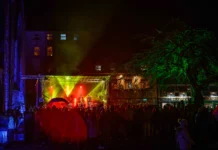Survivors of the Tuam Mother and Baby Home want the government to immediately begin collecting DNA samples from their members.
There is an urgency in getting the jump on this porcess, the Tuam Home Survivors’ Network said, given that many of its members are elderly or in poor health.
“Results from our ageing and in, some cases, frail membership should be banked to eliminate any delay in returning human remains to identifiable relatives for dignified burials.”
The Survivors’ Network, representing survivors of the Tuam Home and families of lost children, said DNA analysis should be done “in a way that will be of greatest benefit to the greatest number of survivors, victims and families.”
According to a statement from the Network “For this to be achieved, as much information as possible should be obtained from each sample of human remains.”
“The quantifying of the DNA extracted is the paramount task to be accomplished.”
Excavation of the former Bon Secours Mother and Baby Home, where 796 children are believed to be buried, is scheduled to begin in the latter half of 2019.
Part of that will involve extracting genetic samples from the children’s remains and trying to use that to identify them.
When the first interim report on possible options for the Tuam Home was produced, it said it would not be possible to extract DNA from the remains buried there.
However, advances in genetic science and technology in the past few years have changed that scenario.
The Survivors’ Network insists that the earlier samples are taken and quantified, the easier it will be to determine how to proceed with analysis.
Where there is a high yield of DNA from samples, the network says STR analysis can be used to compare them to samples provided by potential family members.
If there is no match, or the quality of the DNA samples is not as good, further analysis technique can be used to compare them to genealogy companies or identify information on genealogy or medical history.











